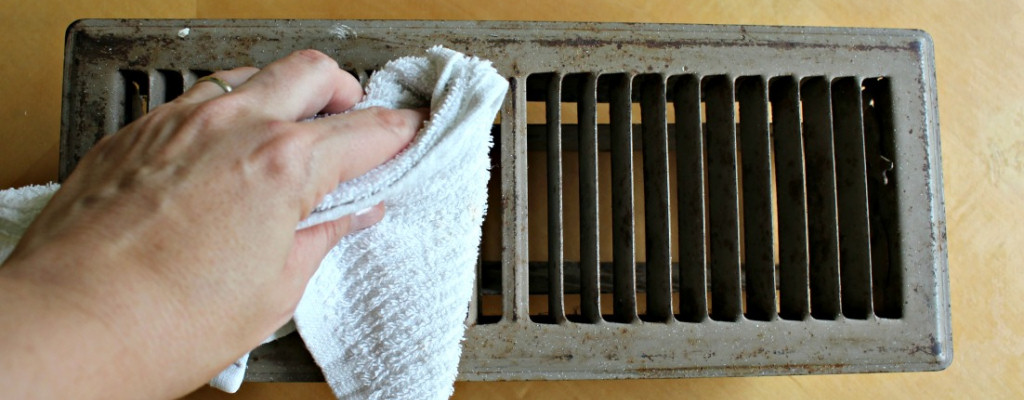Vent covers are small but crucial items when it comes to your home’s HVAC system and your home’s decor as well. While most of your heating and cooling system is hidden, vents allow the heated and cooled air to distribute throughout your home evenly. They’re an essential part of keeping your home comfortable.
Most of the time, we don’t put much thought into our homes’ vents unless they interfere with a room’s decor, which they sometimes do. Vent covers come in all shapes and sizes and can be a neutral look or an eyesore. They can also have an overall impact on the health of your home. Here’s what you need to know about vent covers and how they function in your HVAC system.
Like the rest of your system, your ducts and vents might need an update to function optimally. If you think your ducts and vents might be letting your home down, give us a call for a free evaluation and estimate!
Understanding your vent system
Your home has two types of vents – return and supply. As your system works to keep the air in your home at a comfy temperature, the return vents help get the air back into your system to continue regulating the temperature.
Cold air return vents
Your home’s return vents can either be large and centrally located, or they can be in virtually every room. Most HVAC experts recommend that each room should have a return vent. Newer homes typically have return vents higher off the ground on an interior wall, while older homes may have them lower and on exterior walls – which is much less efficient.
Return vents also help to control your home’s air pressure and flow. They can help you save on energy costs by drawing in air that’s close to your home’s current temperature, as opposed to pulling in air closer to the temperature outside.
Supply registers
As with its return vents, all rooms in your home should have a supply register vent as well. Supply vents allow the air from your system into the room and change its temperature to your desired setting. They can be found on outer walls, below windows, or on the floor. Keep in mind that the supply vents should be located away from your return vents, so the air from the supply is not recirculated before it can affect the room’s temperature.
Vent covers and grilles
Both types of vents play an important role in heating and cooling your home, but they can’t just be empty holes in your walls or floors. Air vent covers serve an important function – to maintain a room’s airflow, and in some cases, to remove airborne impurities as well. Covers are also available in a variety of styles to help them complement your room’s decor.
Cleaning vent covers
Regardless of style, clean vents are essential for air quality and efficiency in your home. It’s recommended that you have your air ducts and vents professionally cleaned once a year. The average cost of a duct cleaning is around $325, with most homeowners spending between $275 and $375. This will give your vents a thorough cleaning and ensure all bacteria, fungi and other nastiness that can build up over time is removed.
However, in unusually dusty and high-traffic areas, you might want to add vent cleaning to your weekly routine. Here are some ways to keep your vent covers free of dirt and debris between professional cleanings.
Floor vent covers
When thinking of high-traffic areas, vent covers on your floor may come to mind first. After all, people walking through are bound to cause dust and dirt to settle into the floor vents. If the cover is made of metal or plastic, just unscrew it and put it in your dishwasher through a normal cycle. However, with new designs, some covers are made of wood or vinyl to disguise themselves more effectively. These shouldn’t go in the dishwasher – instead, remove and wash them by hand.
Baseboard vent covers
In many homes, vents are located on the baseboards. Similar to flooring vents, movement between rooms can push debris towards the walls, and dust bunnies inevitably accumulate near the baseboards. An excellent place to start is by vacuuming or sweeping the area to remove excess dust. If you’re able to remove your baseboard vent covers, detach them and follow the steps above. Older homes may have them permanently attached, so be careful not to cause damage. If they aren’t removable, use a small cloth and some cleaning solution to remove dust between the slats.
Vent cover decor
If your home is older, it probably has covers that don’t add any style to the room. Swap in some contemporary white vent covers, and you’ll be amazed at what a big difference this small detail makes! The room will look much cleaner and more stylish compared to before. So, if you’re looking for an inexpensive decor upgrade, consider changing your vent covers.
In-store style options
Your local hardware store probably carries a selection of vent covers for standard sizes, and some will be more decorative than others. But, if you’re just looking to freshen up a room’s style, this is a super-easy way to go. Don’t forget to measure the vent openings before you shop!
DIY vent covers
If a room has unusual-shaped vents or you’d like something truly unique, why not create your own vent cover? This works best with return air vents but can be done on supply vents using proper materials. Something as simple as a doormat can be used to transform a room’s look.
To sum up, your home’s vent covers are an integral part of your HVAC system. They require proper care and routine maintenance, just like the other areas of your home. Use these tips, and you’ll keep your home’s vents looking and working their best.


Comments are closed